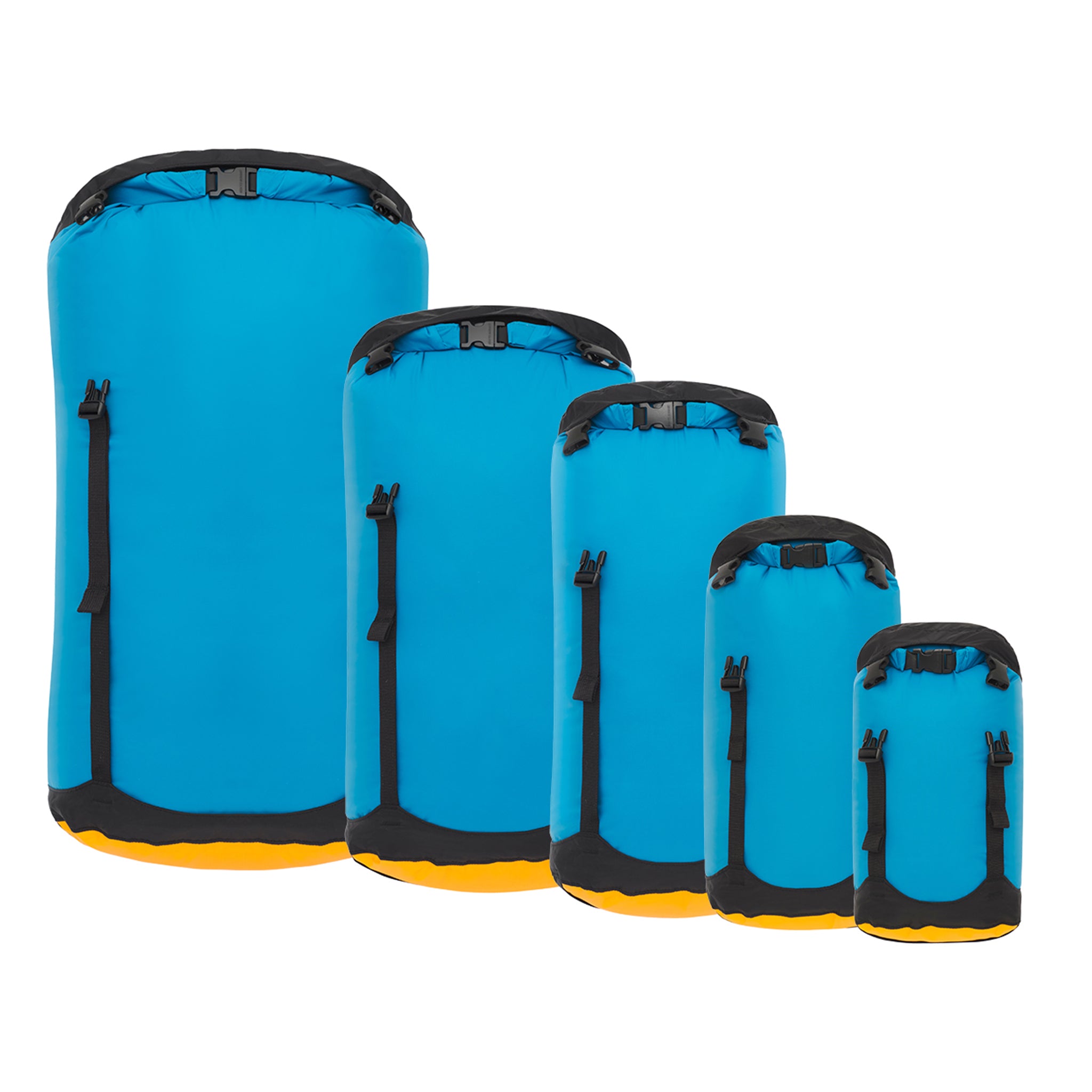“Curious as to your compression sack habits.
Do you use them for everything that is compressible in your pack or just certain items?
Also, where do you go for your compression sack needs? I have them from several sources and don't like any of them, but they are all at least 20 years old. Can't imagine there have been many dramatic improvements, but you never know”
We have a variety of compression stuff sacks. As the name indicates we use them for compressible stuff; sleeping bag and clothes. The volume reduction with a sleeping bag or off season down/wool/fleece clothing is impressive, and the reduced volume is easier to pack inside a dry bag.
I don’t know about “dynamic improvements”, but the design of the bag, cap and straps does matter. The compression bag that came with my giant 0F Wiggies bag is not good. It works, so only so-so. The straps are attached at the very base of the bag and the cap design is poor.
The compression bags I like the most are Sea to Summit.
https://seatosummitusa.com/products/compression-sack
Our Sea to Summit compression bags are old, but the basic design seems unchanged. The straps are attached part way up the bag, which helps with compression, the top “cap” is well designed, and I would guess that the material is the same water-resistant 70D Nylon fabric shown in that link. It doesn’t hurt to have an extra layer of water protection, even for a stuff sack going inside a dry bag.
Those S2S use four tensioning straps, two with ladder locks and two with side release buckles. I got one out for a look-see, thinking I would see ITW/Nexus ladder locks side release buckles. They are instead stamped “National Molding Rock Lockster Duraflex”. I crank down on those webbing tensioners with considerable force, never had a failure.
I must like S2S compression bags, we have every size from the giant 30L, which fits the massive Wiggies bag with room for a pillow. 15L and 20L for smaller/lighter sleeping bags or clothes, and even the little 6L, which gets packed with an off season set of spare dry clothes, long underwear, vest, fleece top & bottom, wool socks and a knit cap. I don’t have to grub through the clothes bag ISO spare warm duds; I just pack it in the fall and can stick it in a small dry bag for day trips in case I take a swim.
Sea to Summit also makes 30D ripstop compression bags.
https://seatosummitusa.com/products/ultra-sil-compression-sack
In stuff bag weight savings I don’t see the point, but YMMV.

